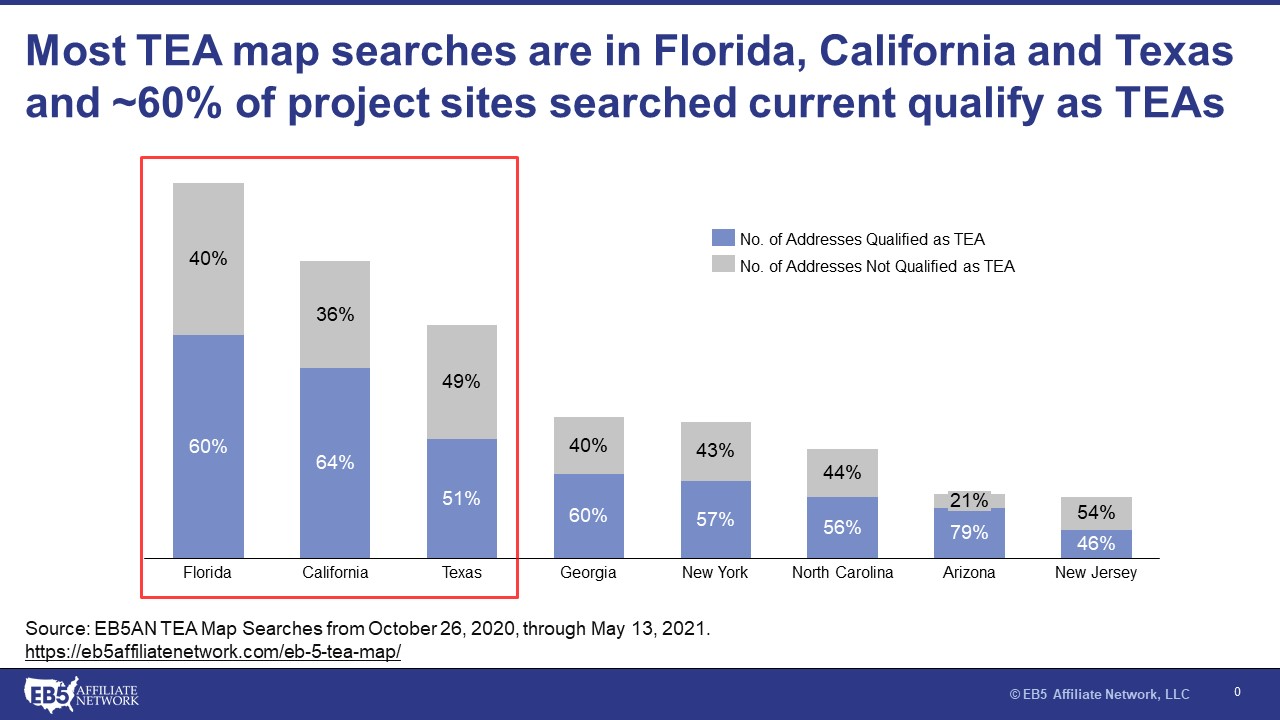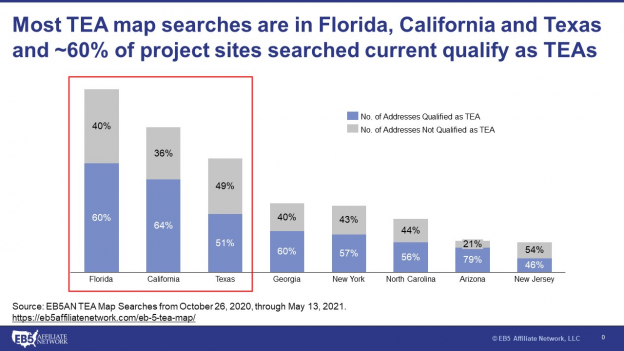
EB5AN offers a free interactive targeted employment area (TEA) map that allows users to determine whether an address is in a TEA. In addition to determining TEA eligibility, users can also download a free TEA qualification report to include with their United States Citizenship and Immigration Services (USCIS) petitions.
Why Is TEA Designation Important?
The EB-5 investment program’s most challenging requirement is usually the minimum investment amount. Foreign nationals interested in becoming permanent U.S. residents must put up at least $1,000,000 of their lawfully sourced capital if their project is located outside a TEA.
However, the minimum EB-5 investment amount is only $500,000 for projects located in TEAs. Due to this reduced investment requirement, TEA projects are far more popular among EB-5 investors—in fact, 95% of all EB-5 investors choose TEA projects.
How Are TEAs Designated?
An area is designated as a TEA if it is rural or has high unemployment. A rural TEA cannot be in a metropolitan statistical area (MSA) or on the outskirts of a city or town with a population greater than 20,000. High-unemployment TEAs must have an unemployment rate at least 150% above the national average.
USCIS accepts four calculation methods for TEA eligibility. Only one of these methods relates to rural TEA designation: rural TEAs must use regional data from the U.S. Office of Management and Budget and the most recent 10-year U.S. census.
The three other methods all deal with high-unemployment TEAs:
- The ACS calculation method uses census tract data from the five-year American Community Survey (ACS).
- The county-level method uses Bureau of Labor Statistics (BLS) data for an entire county.
- The census-share method uses a combination of census tract data from the five-year ACS and county-level data from the BLS.
EB-5 investors must provide documentation in their I-526 petition proving that their project is in a TEA.
Data from TEA Map Searches
Most EB5AN TEA map searches carried out from October 26, 2020, to May 13, 2021, looked for addresses located in just three states—Florida, California, and Texas. California has the highest percentage of addresses that qualify as TEAs: a remarkable 64%. Across the United States, approximately 60% of searched prospective project sites currently qualify as TEAs.
If you are interested in finding out whether an address falls within a TEA, please visit EB5AN’s interactive TEA map.











